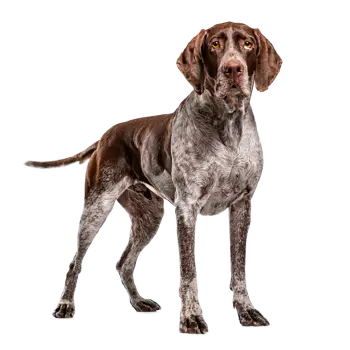Integrating a Dannish Pointer into family life requires understanding their dual nature as hunting dogs and household companions. These dogs adapt well to family living when their exercise, training, and mental stimulation needs are consistently met. Families who enjoy outdoor activities, have access to space for exercise, and appreciate having a dog involved in daily routines will find Dannish Pointers fitting naturally into their lifestyle. The breed's calm indoor demeanor makes them more manageable than some sporting breeds that remain constantly active even at home.
The ideal living situation includes a house with a securely fenced yard where the Dannish Pointer can exercise safely and explore interesting scents. While they can adapt to various housing types if given adequate exercise, apartment living poses challenges due to their size and need for outdoor activity. A fenced yard should be secure, as their hunting instincts may lead them to follow interesting scents if they escape. The fence height should be at least four to five feet, as some individuals can jump surprisingly high when motivated. Urban living is possible if owners commit to providing multiple daily exercise sessions in safe, appropriate areas.
Families with children generally find Dannish Pointers to be excellent companions. The breed's patient, gentle nature makes them reliable with kids of all ages. They tolerate the noise, movement, and unpredictability of children better than many breeds, rarely showing irritation or impatience. Their moderate size and calm demeanor mean they're less likely to accidentally knock over small children compared to larger, more exuberant breeds. Dannish Pointers often form particularly strong bonds with children in their family, taking on a protective role while remaining gentle and playful.
Teaching children proper interaction with dogs remains important regardless of breed temperament. Kids should learn to respect the dog's space, never disturb them while eating or sleeping, and interact gently rather than roughly. The Dannish Pointer's patience shouldn't be tested unnecessarily; even tolerant dogs have limits. Supervised interactions, especially with young children, ensure positive experiences for both dog and child. Teaching children to participate in the dog's care, training, and exercise helps build strong, respectful relationships.
Multi-dog households work well with Dannish Pointers, particularly when they're raised with other dogs or introduced properly. Their cooperative nature and experience working with other hunting dogs makes them generally accepting of canine housemates. They can live peacefully with dogs of various breeds and sizes, establishing stable pack dynamics without excessive dominance or submission issues. Proper introductions using gradual, supervised meetings help ensure harmony. Providing each dog with individual attention, feeding areas, and resources prevents competition and jealousy.
The breed's relationship with cats and small pets varies by individual and socialization history. Dannish Pointers have hunting instincts that can trigger chase responses toward small, fast-moving animals. Dogs raised with cats from puppyhood often learn to coexist peacefully, recognizing household cats as family members rather than prey. However, even well-socialized individuals may chase unfamiliar cats or outdoor wildlife. Small pets like rabbits, guinea pigs, or birds should always be protected from access, as predatory instincts can surface unexpectedly. Careful management and supervision prevent accidents.
Daily exercise requirements are substantial and non-negotiable for the Dannish Pointer's wellbeing. Adult dogs need at least 60-90 minutes of vigorous activity daily, including walks, runs, hiking, or hunting. Mental stimulation through training, puzzle toys, or scent work supplements physical exercise. The breed's hunting heritage means they particularly enjoy activities involving their nose, such as hiding treats for them to find or participating in tracking or nose work training. Under-exercised Dannish Pointers may develop behavior problems including excessive barking, destructiveness, or hyperactivity.
Their methodical nature means exercise can be structured rather than necessarily high-speed. Long walks where they can sniff and explore satisfy them more than brief, hurried outings. Weekend hiking trips, visits to dog-friendly natural areas, or hunting excursions during season provide excellent physical and mental engagement. For hunting families, the Dannish Pointer enthusiastically participates in hunting activities and may require less supplemental exercise during hunting season when they're regularly working.
Leaving Dannish Pointers alone requires gradual acclimation and reasonable time limits. While more independent than some breeds, they prefer company and can develop separation anxiety if left alone excessively without proper conditioning. Adult dogs who've been trained to accept alone time can typically manage 4-6 hours, though shorter periods are preferable. Providing puzzle toys, safe chew items, and ensuring thorough exercise before departures helps them relax during alone time. Many owners find crate training helpful, as dogs often find crates comforting den-like spaces rather than confinement.
Routines and consistency are important for Dannish Pointers. They thrive when they know what to expect each day, from meal times to exercise schedules to bedtime routines. Unpredictable schedules or chaotic households can cause stress. Establishing clear rules about acceptable behavior and enforcing them consistently helps these intelligent dogs understand expectations. All family members should enforce the same rules to prevent confusion.
The breed's moderate grooming needs make them relatively low-maintenance in that respect. Weekly brushing, occasional baths, regular nail trimming, ear cleaning, and dental care comprise their grooming routine. This manageable maintenance schedule fits easily into busy family life without requiring professional grooming or extensive time investment.
Travel and outdoor adventures are generally enjoyed by Dannish Pointers. They adapt well to camping, hiking, and other outdoor activities when properly conditioned. Their hunting background makes them comfortable in outdoor environments and various weather conditions. Many owners successfully travel with their Dannish Pointers, whether for hunting trips, vacations, or weekend getaways. Proper conditioning to car travel from puppyhood helps them become comfortable travelers. When family needs are aligned with the breed's characteristics, Dannish Pointers become cherished family members who enrich household life through their loyalty, gentle nature, and enthusiastic participation in family activities.

